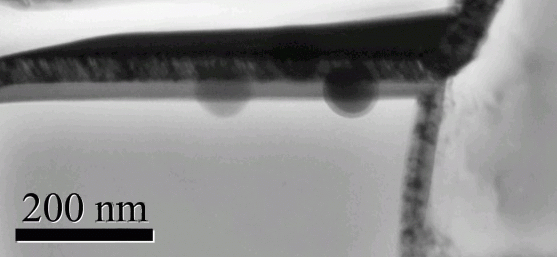Silicon Drift Detector - Energy Dispersive X-ray Analysis
The latest generation of X-ray detectors have greatly improved collection efficiencies and can operate at higher count rates. Furthermore they do not need liquid nitrogen cooling, using instead a small Peltier cooler. The 2100 has an 80mm2 Oxford Instruments X-Max silicon drift detector (SDD); you can see the detailed specifications here. The main advantage for TEM is the reduced time for data collection, giving reduced specimen drift, beam damage, contamination and user time. The minimum spot size of the 2000FX with a W filament is about 5nm, which gives only a few tens of X-rays/second from a thin TEM specimen and is often not enough to be able to collect useful data. Increasing the beam current also increases the electron probe size; here is a recent example of an attempt to analyse a 20nm thick layer in the 2000FX (spot size 5, collection 100 sec).
silicon drift detector (SDD); you can see the detailed specifications here. The main advantage for TEM is the reduced time for data collection, giving reduced specimen drift, beam damage, contamination and user time. The minimum spot size of the 2000FX with a W filament is about 5nm, which gives only a few tens of X-rays/second from a thin TEM specimen and is often not enough to be able to collect useful data. Increasing the beam current also increases the electron probe size; here is a recent example of an attempt to analyse a 20nm thick layer in the 2000FX (spot size 5, collection 100 sec).

The black circles are contamination on the specimen surface, and give an indication of beam size.
The LaB6 filament of the 2100 gives a higher current in a smaller probe in comparison with the 2000FX, and the system vacuum is better, and we have a more efficient X-ray detector, making it possible to perform meaningful X-ray analysis using a probe size of ~2nm.
